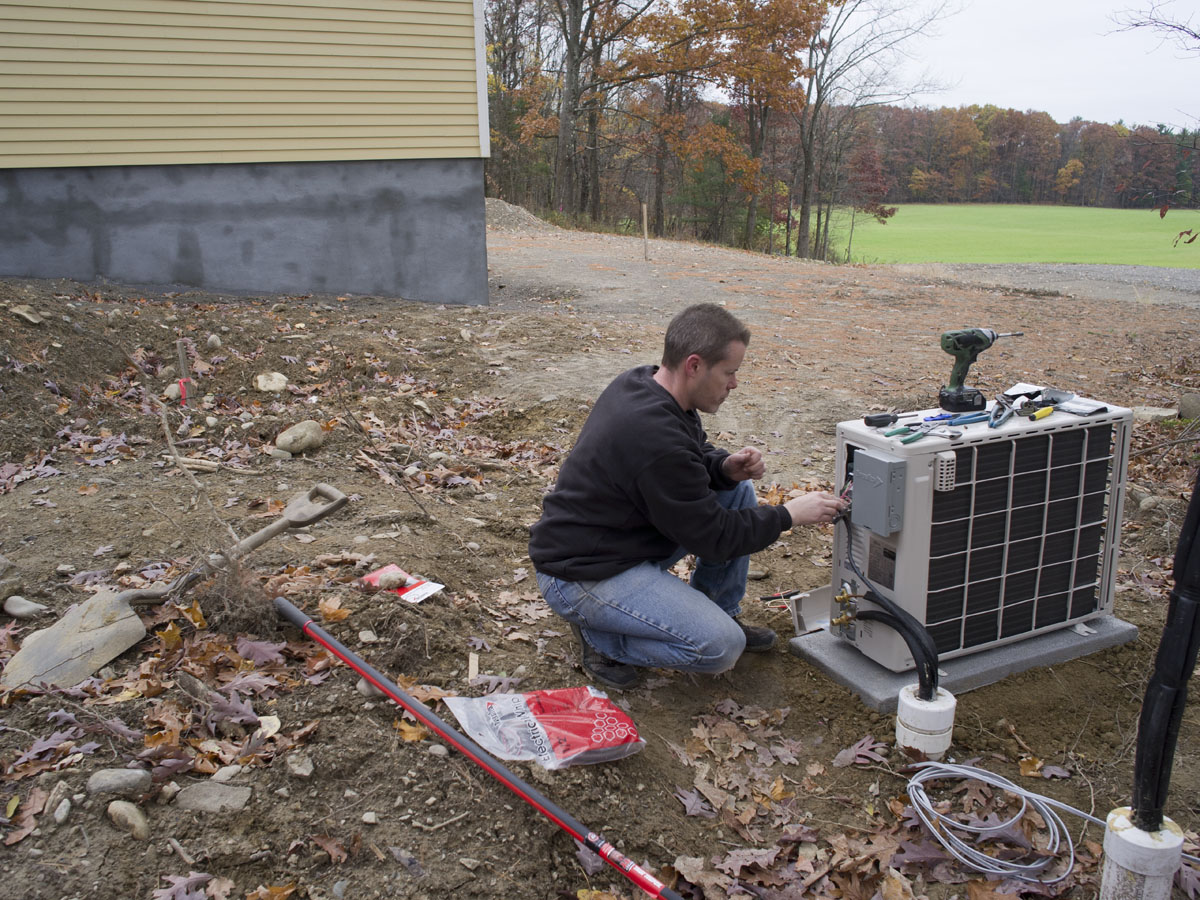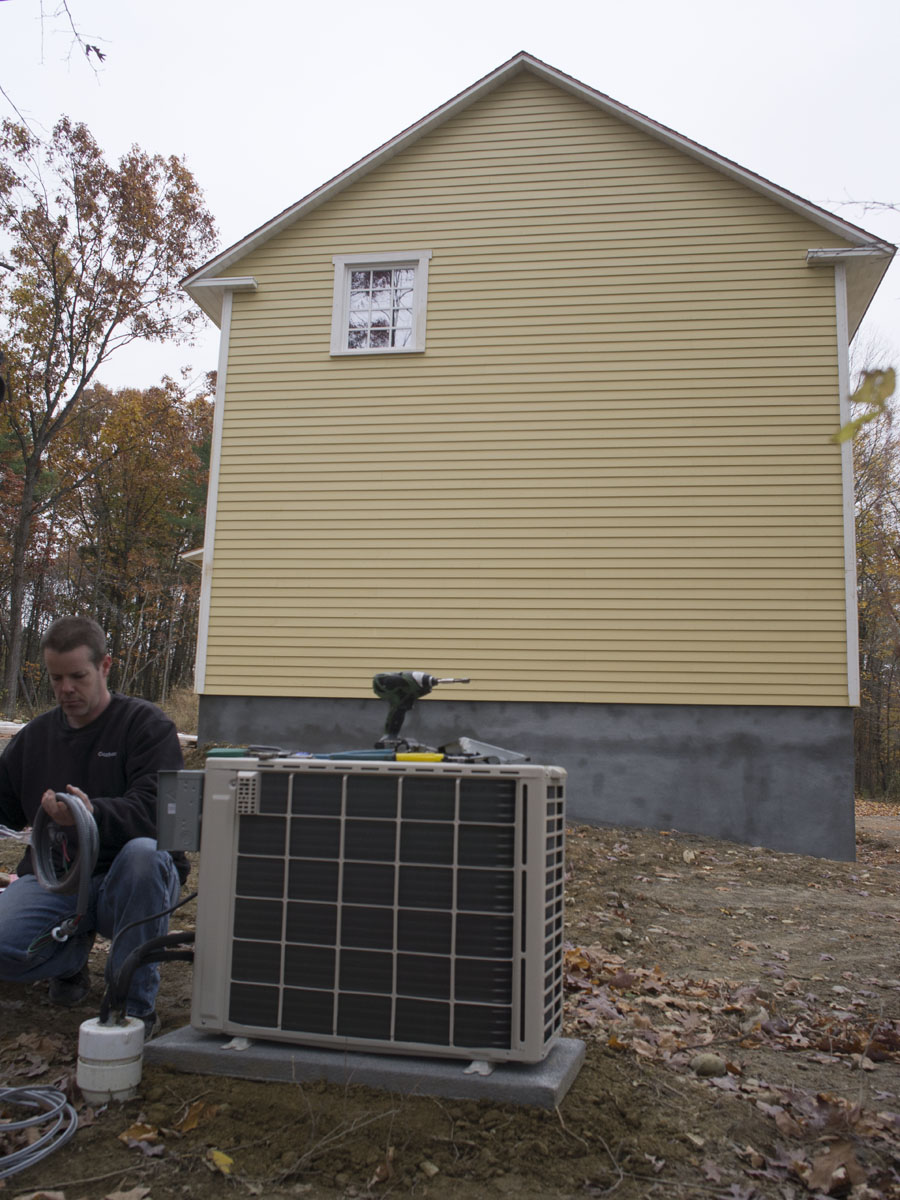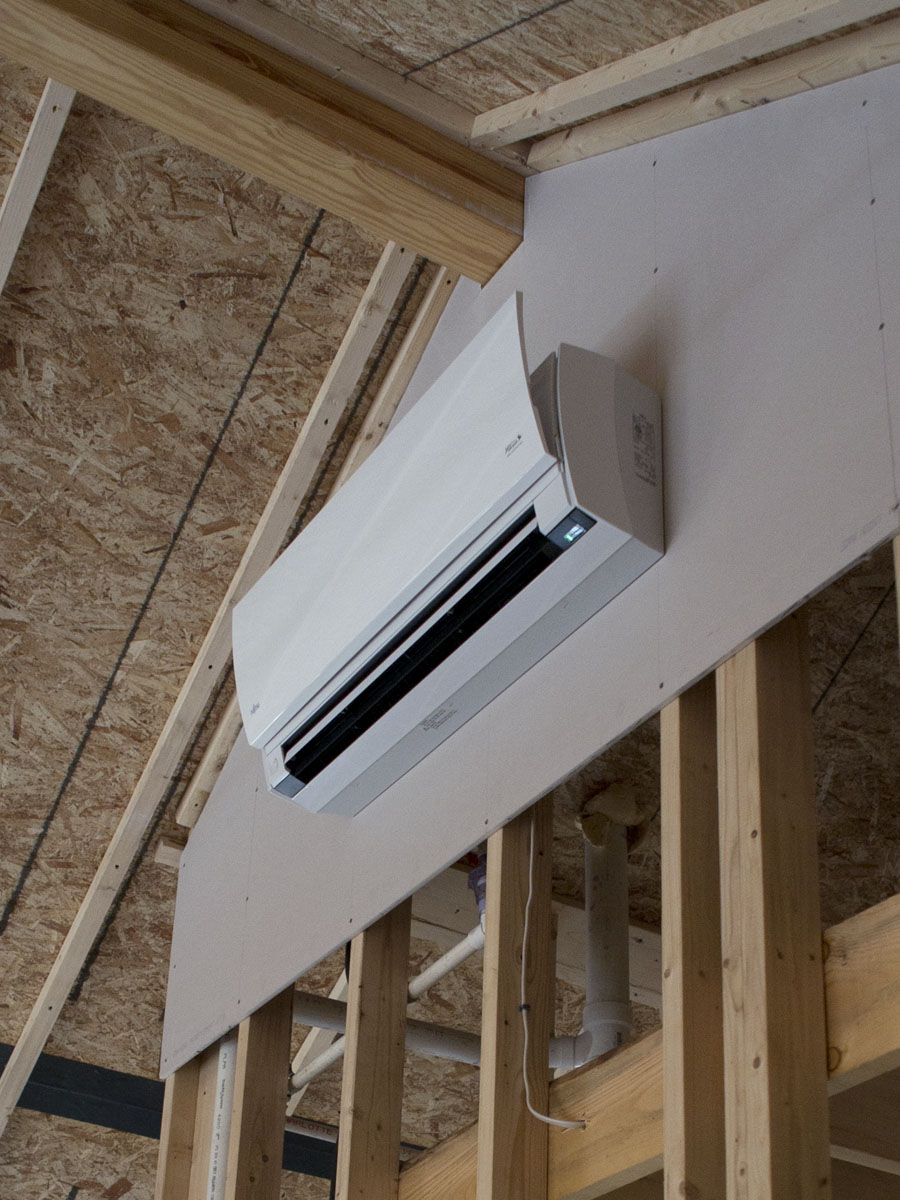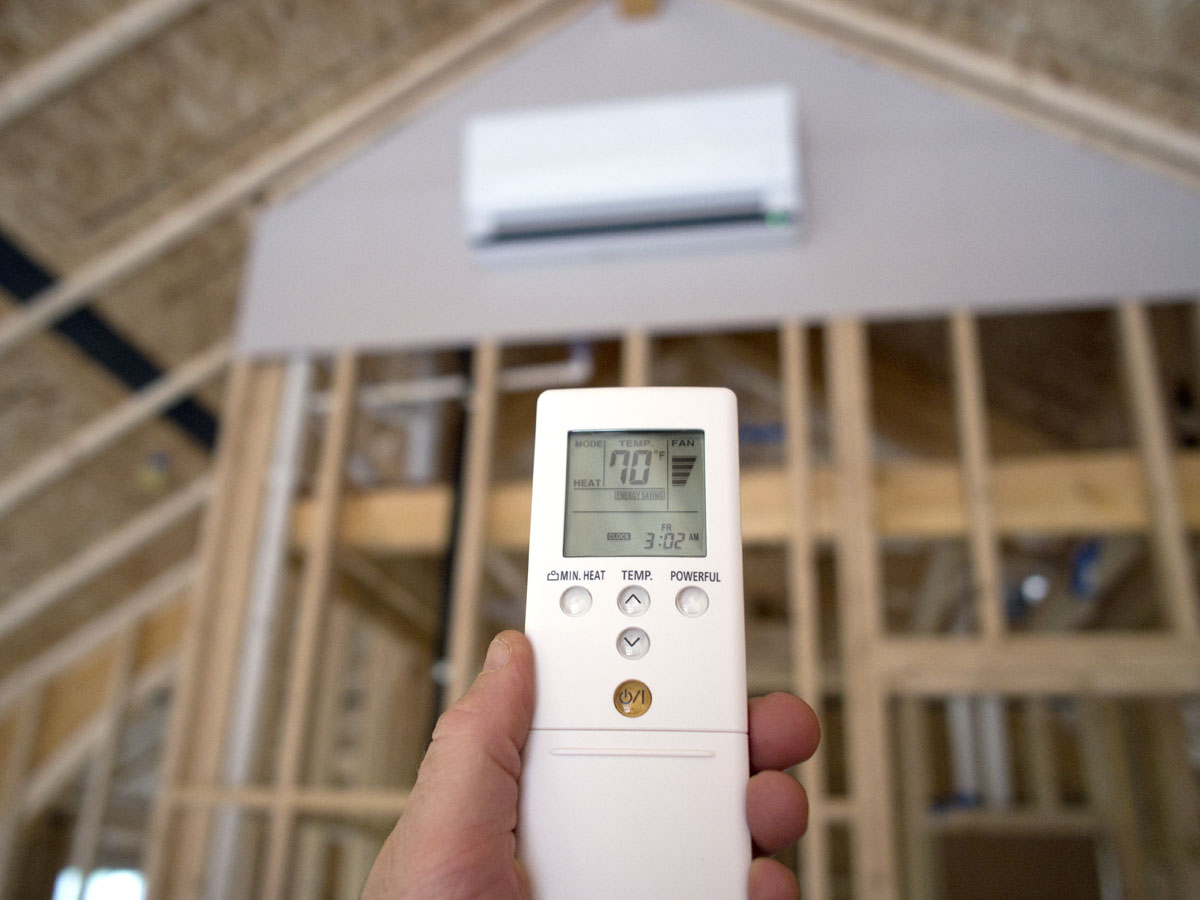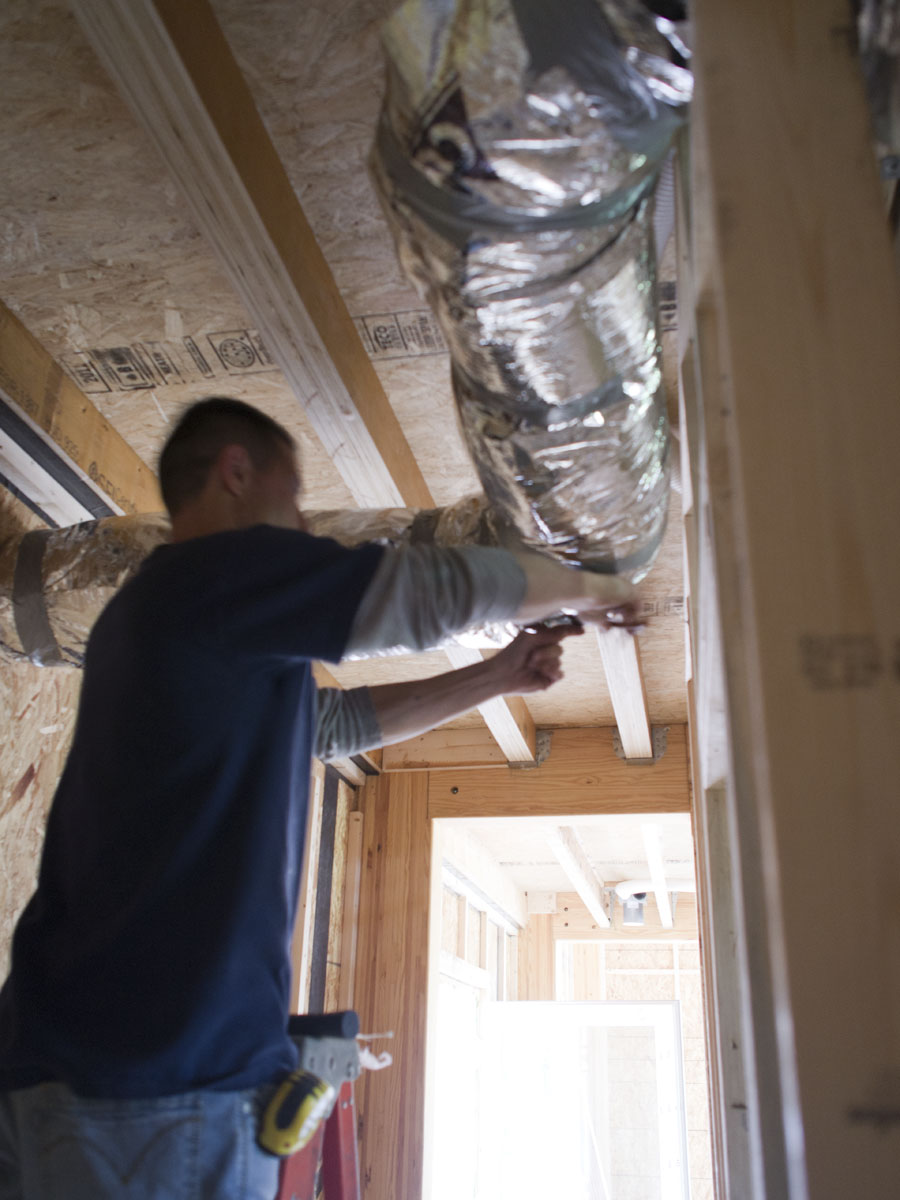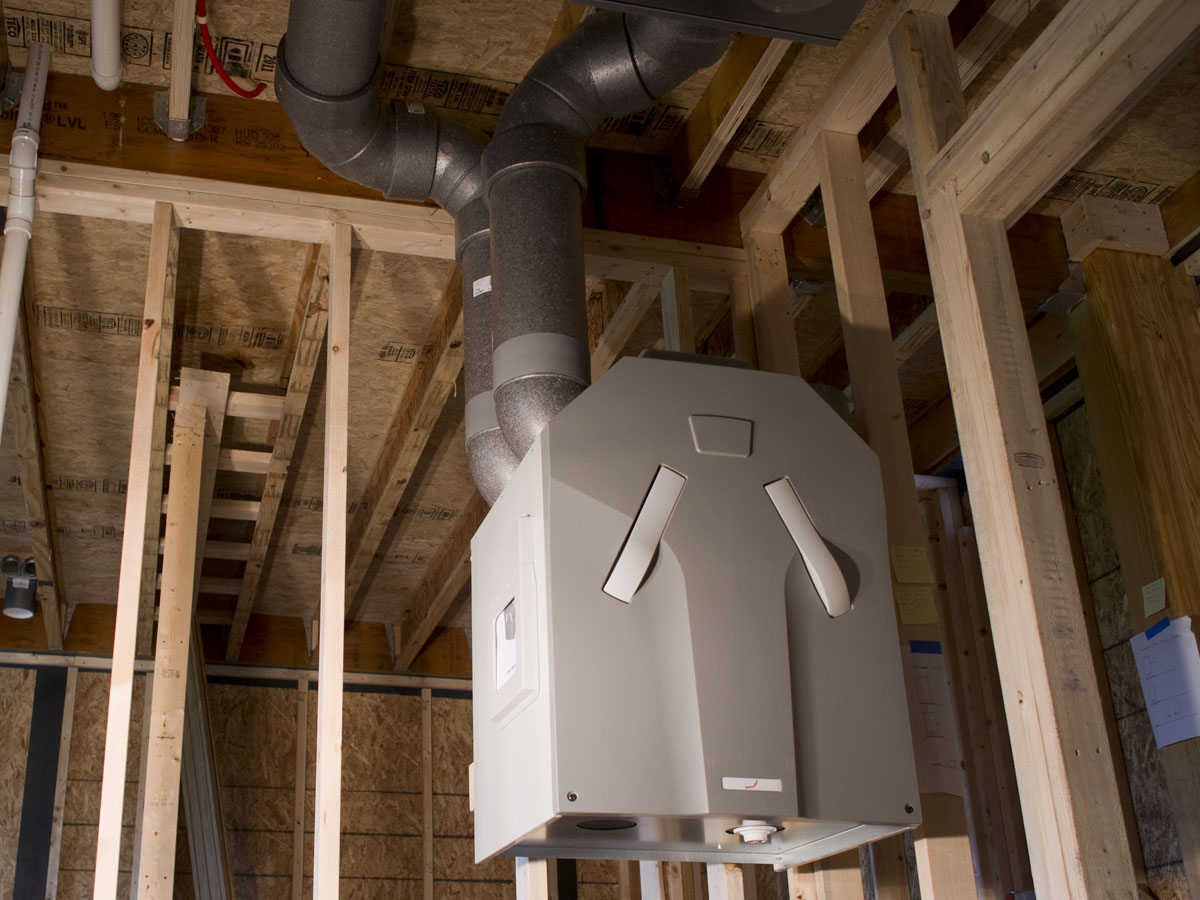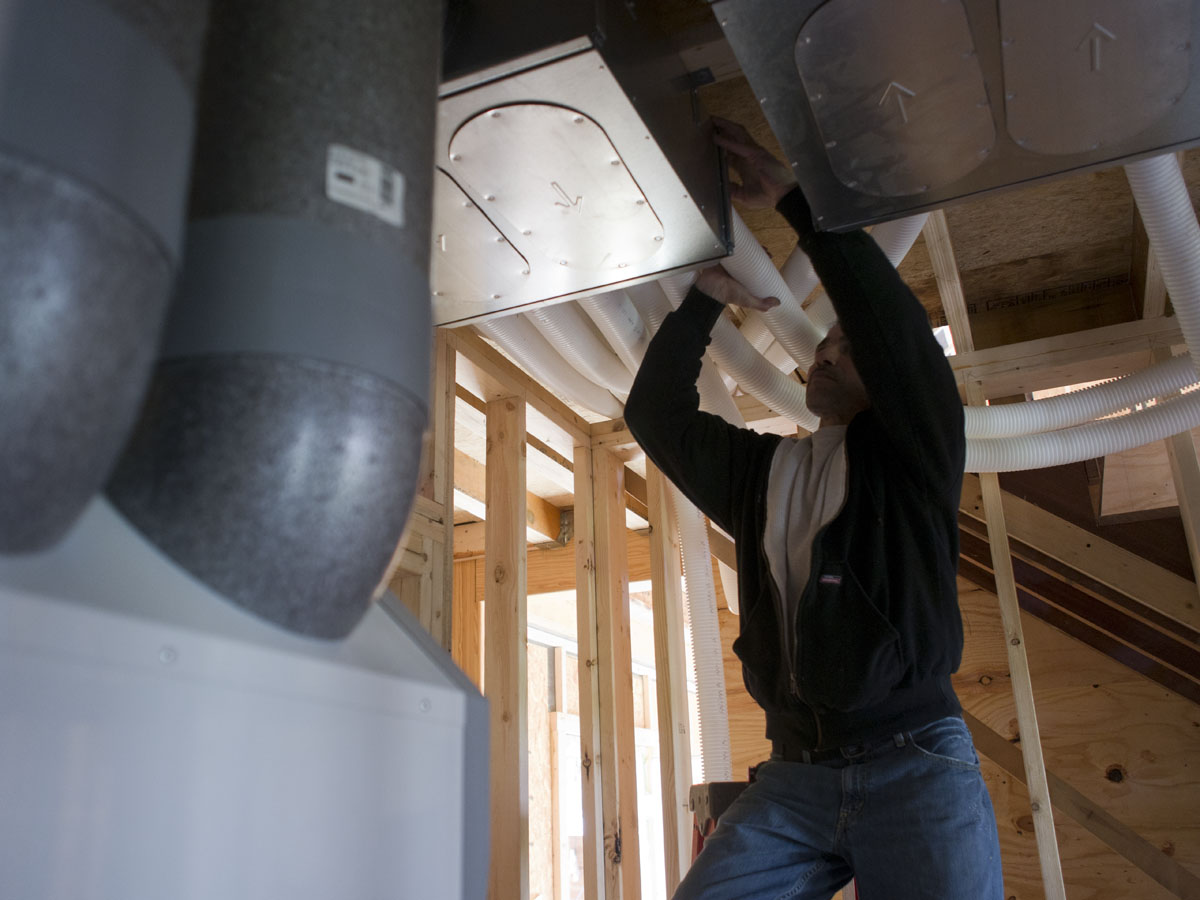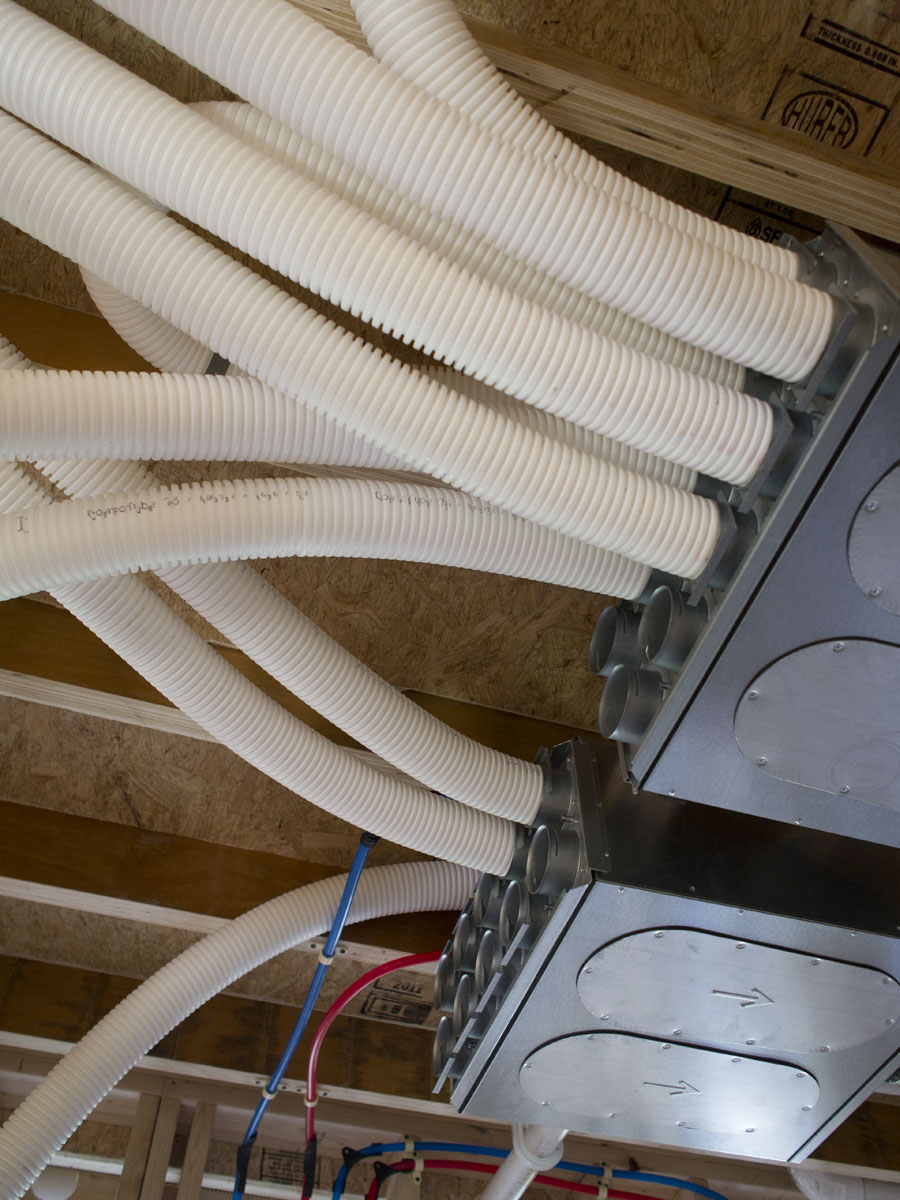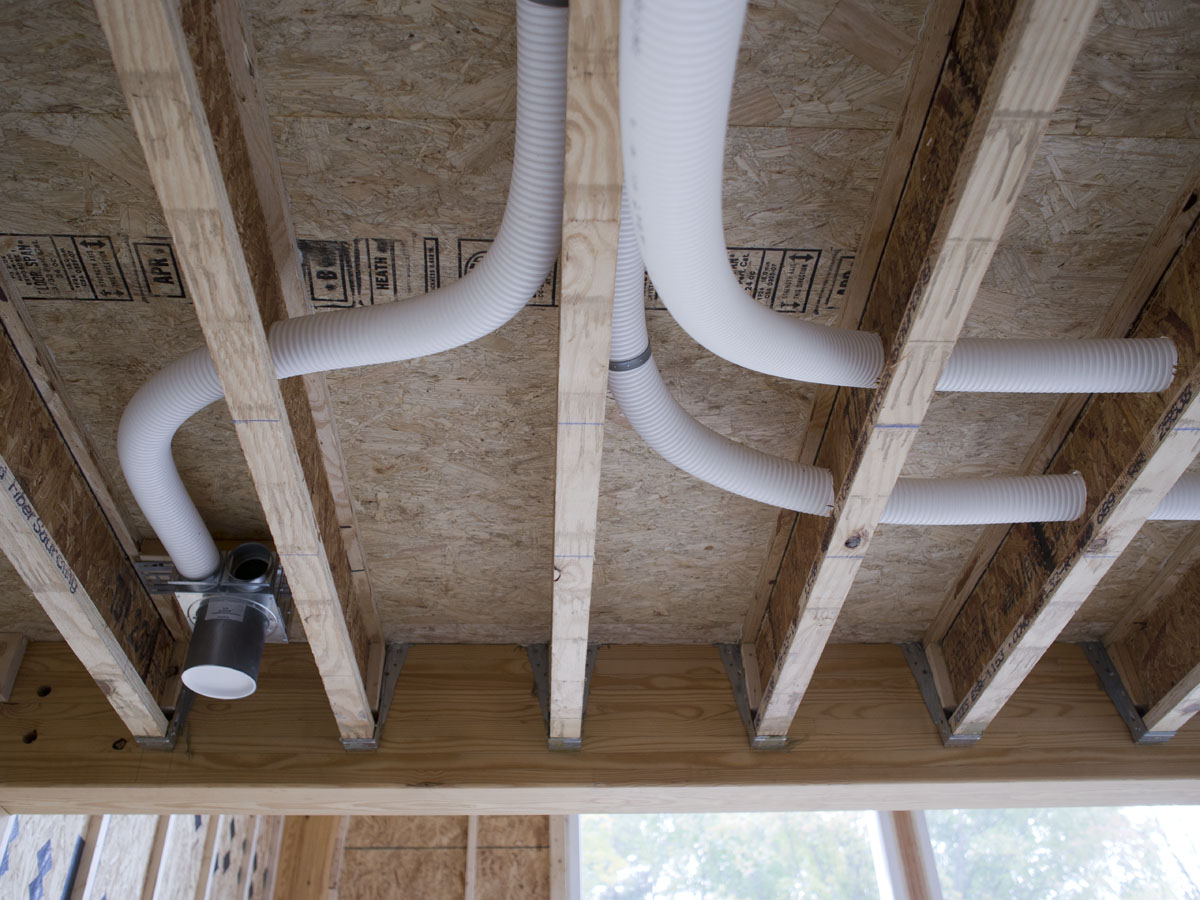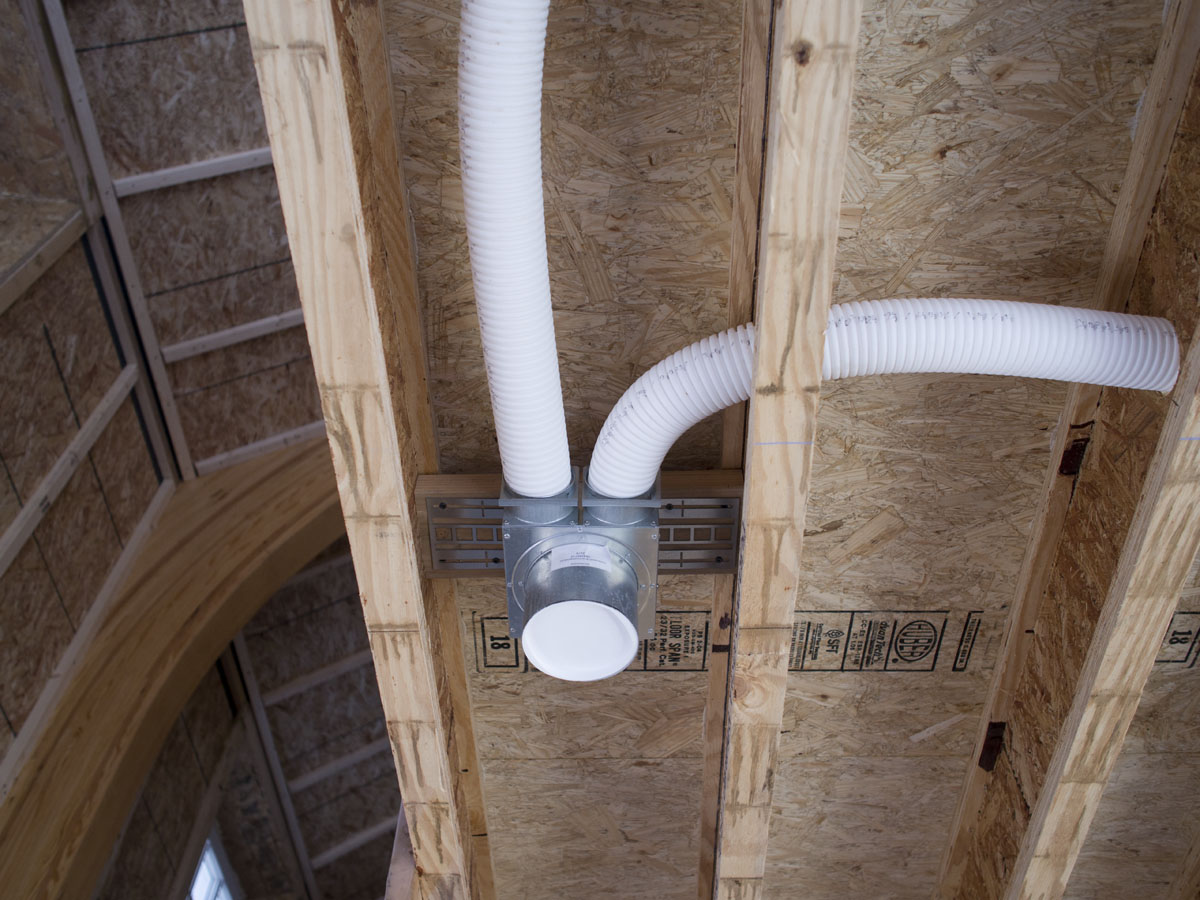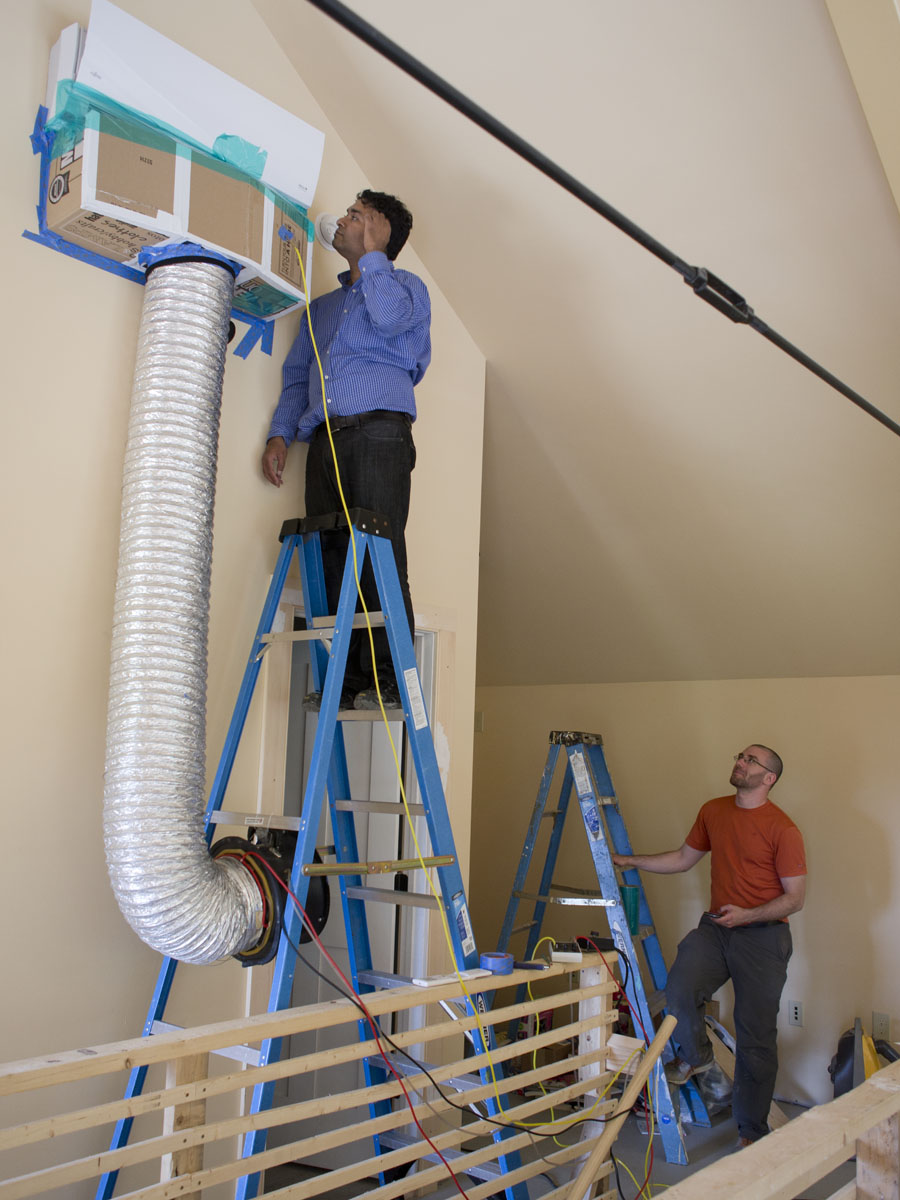
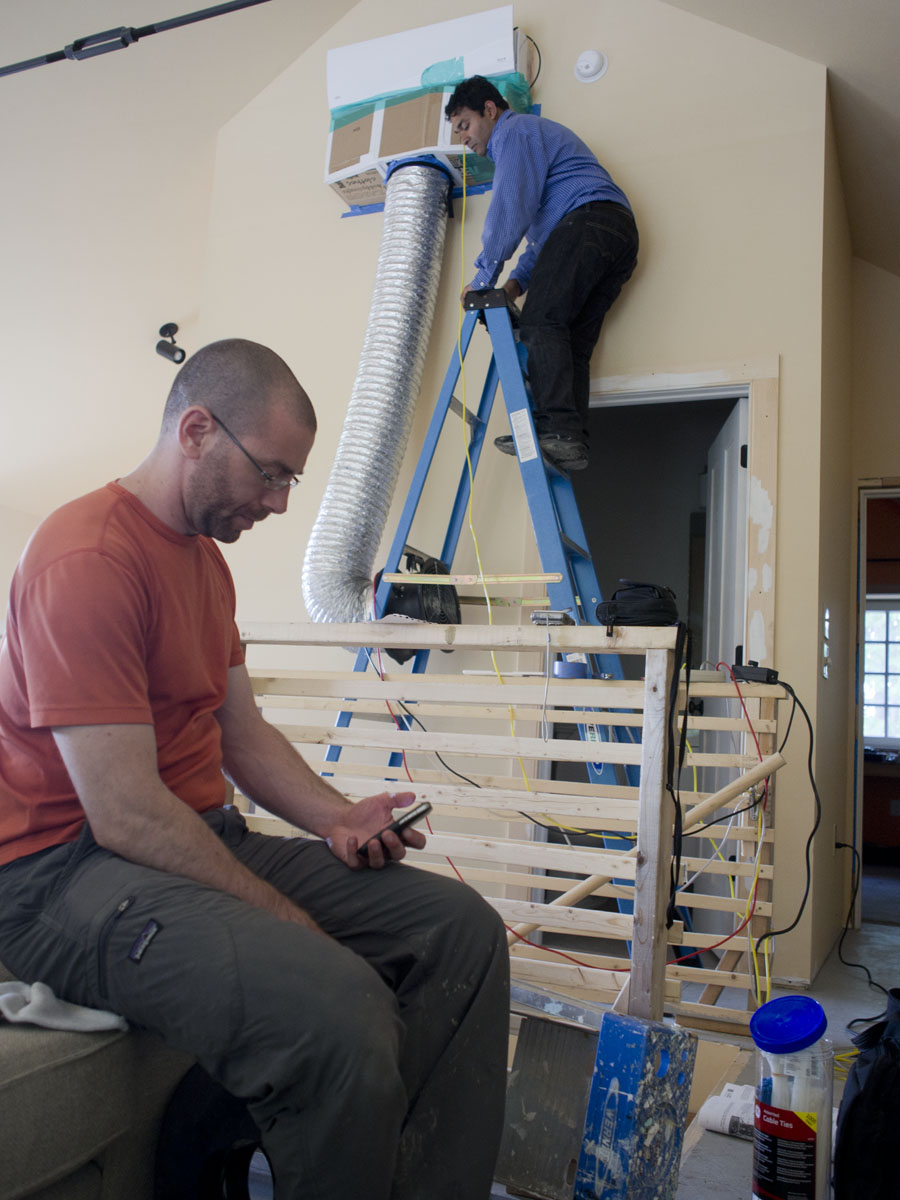 Kapil and Dave from the Levy partnership have returned to gather performance information on our heat pump.
Kapil and Dave from the Levy partnership have returned to gather performance information on our heat pump.
Category Archives: HRV
We passed the test at 0.3 ACH

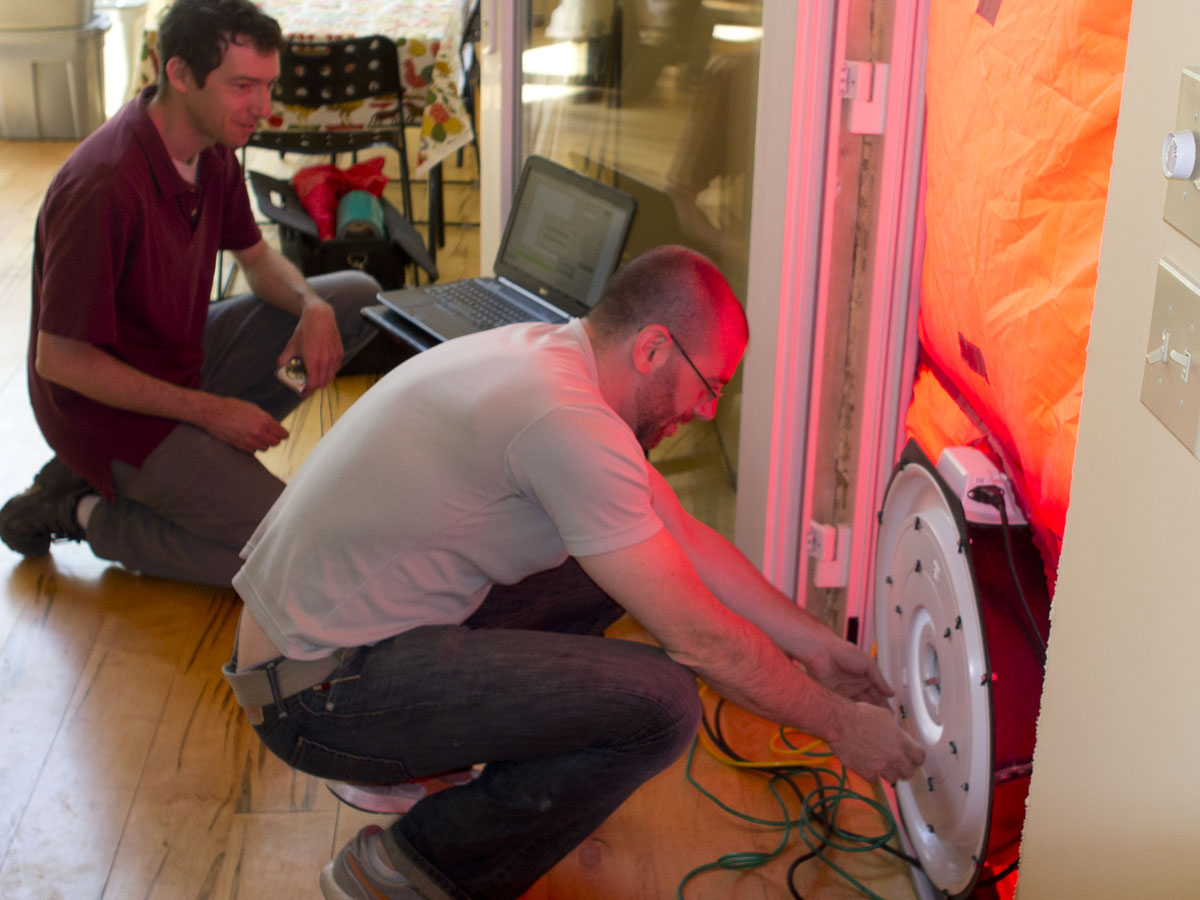

 Jordan Dentz and Dave from The Levy Partnership, along with Greg Pedrick and Nathan Russell from NYSERDA, monitor our final blower door test for Passive House certification. Read more about blower door tests here and here.
Jordan Dentz and Dave from The Levy Partnership, along with Greg Pedrick and Nathan Russell from NYSERDA, monitor our final blower door test for Passive House certification. Read more about blower door tests here and here.
Tuesday, May 7, 2013: The house was filled with brainy building science and energy experts from The Levy Partnership, NYSERDA Building R&D and CDH Energy. One team performed the blower door test, which scored 0.3 air changes per hour (ACH), exceeding the Passive House standard of 0.6 ACH. Another team set up the equipment that will monitor our energy use for the next year.
The blower door test is the key to certification. We are applying through the Passive House Academy, which is accredited by the Passivhaus Institut to provide a global Passive House Certification service.
The whole Passive House movement (that’s Passivhaus in German) is quite new here in the United States, so we volunteered to be energy Guinea Pigs and now there are little black boxes on the walls and wires sticking out of the heat pump. The data will address a number of research questions: How much energy does a Passive House use and how does that compare to homes built to current building code? How do the predictions about energy use made by the planning software compare to real life? Do the mini-split heat pumps and HRV perform like they are supposed to?
A grant from the NYSERDA High Performance Development Challenge is what brought all of this expertise to our particular Passive House, thanks to previous experience at the Barlis Wedlick project in nearby Claverak. While entire walls can be purchased ready-made in Europe that meet the Passive House standard, it’s not so common here, and it’s reassuring to have the experts confirm that our house is up to snuff, technically speaking.
Fujitsu heat pump up and running
HRV up and running
The Magic Box: Zehnder ComfoAir 350 Luxe HRV
Planning the plumbing and HRV
John Tufano and his brother, Rob, will be installing our Zehnder ComfoAir 350 HRV. Today we talked about the placement of vanity sinks, toilets and washers and dryers. Note the plural “washers and dryers”. We doubled up given the pixie size of the condensation unit versus the daily mountain of laundry. Susan wondered aloud if we should have recalculated the PHPP to see if we could pierce the envelope with a traditional dryer vent, thereby gaining capacity and saving cash. But we wanted to hold the Passive House line. Moments after we said, “Hmmm, yeah, this would look good about here,” the deal was done. Decisive hole-drilling by John and Rob closed the door on doubts. Full speed ahead.

